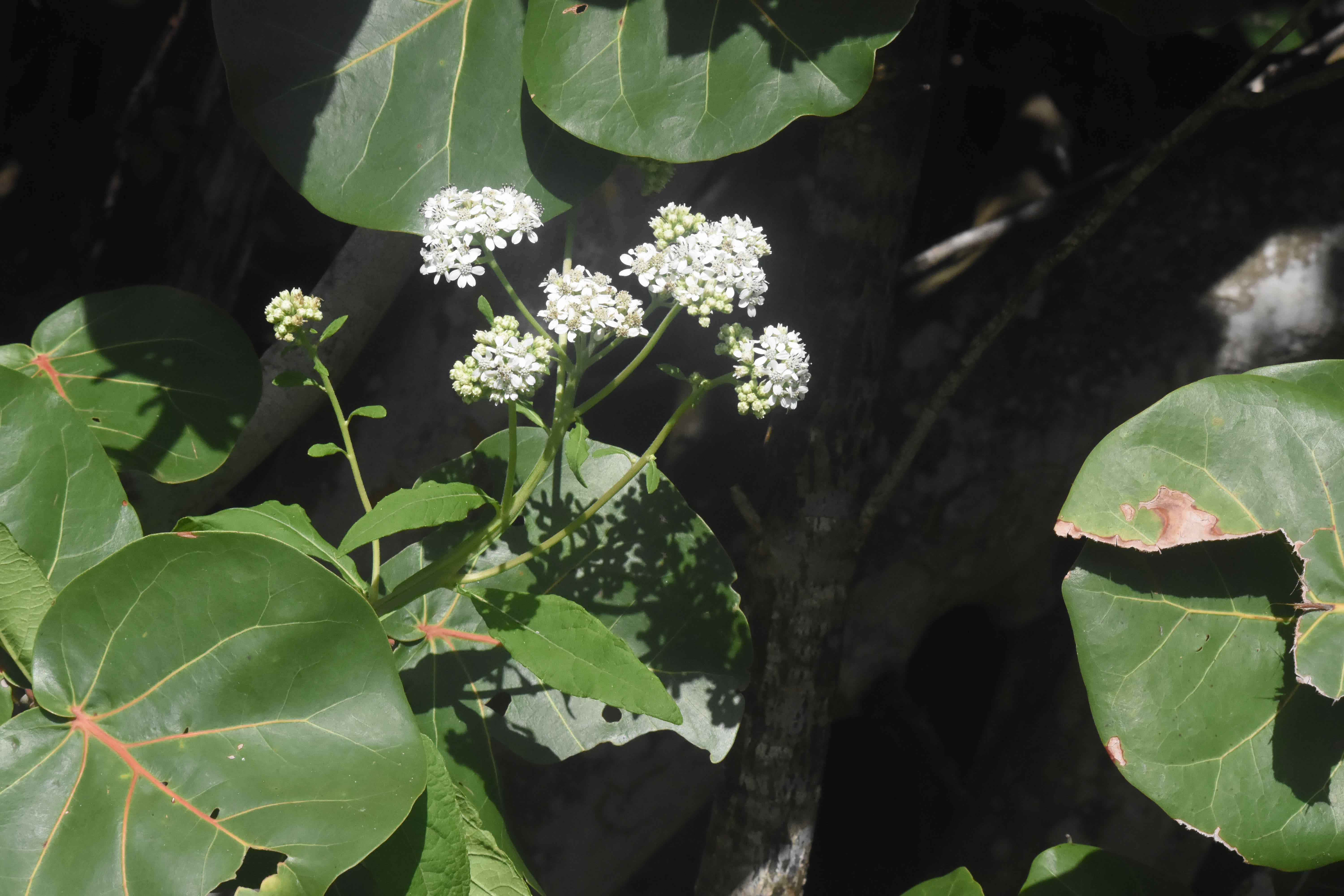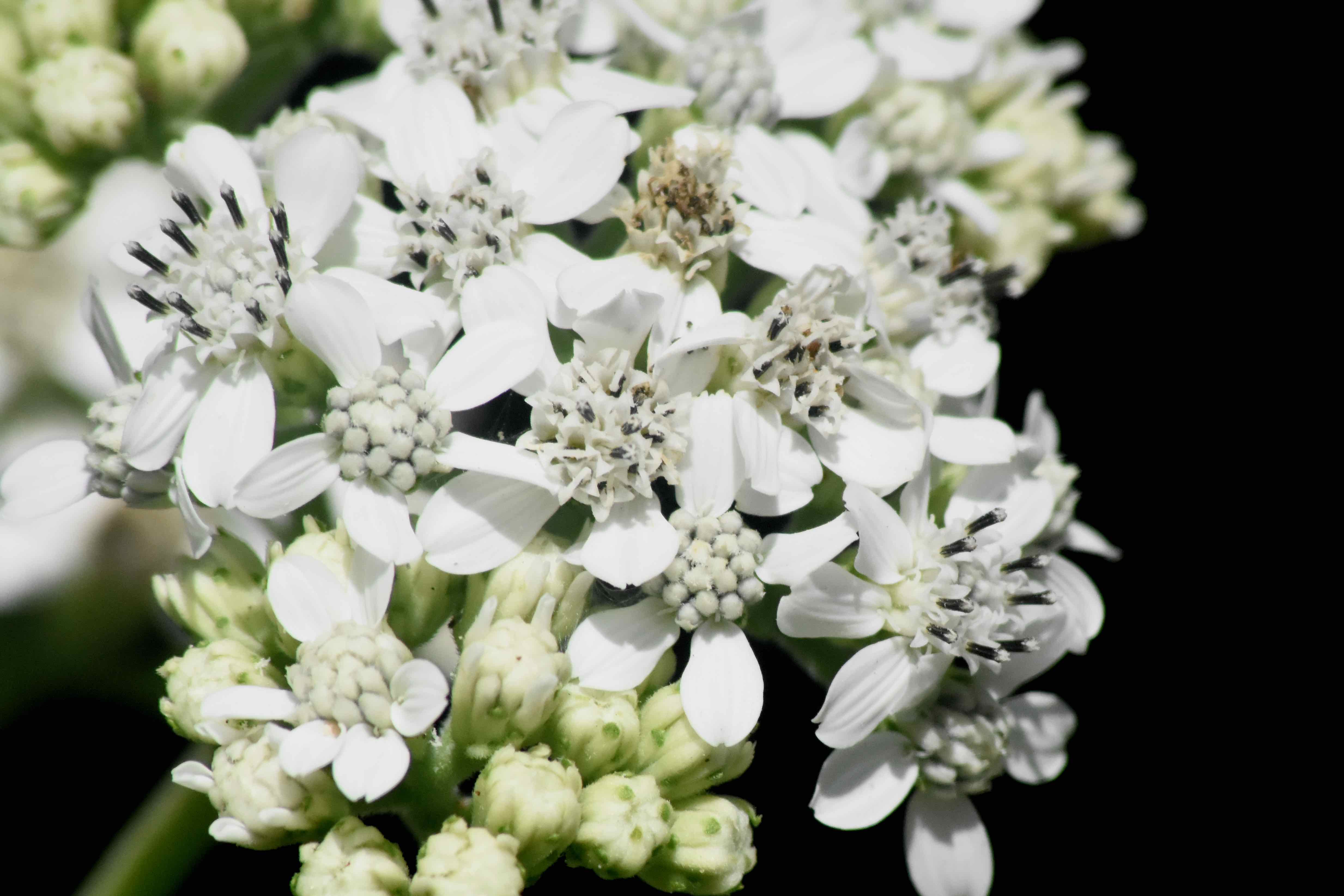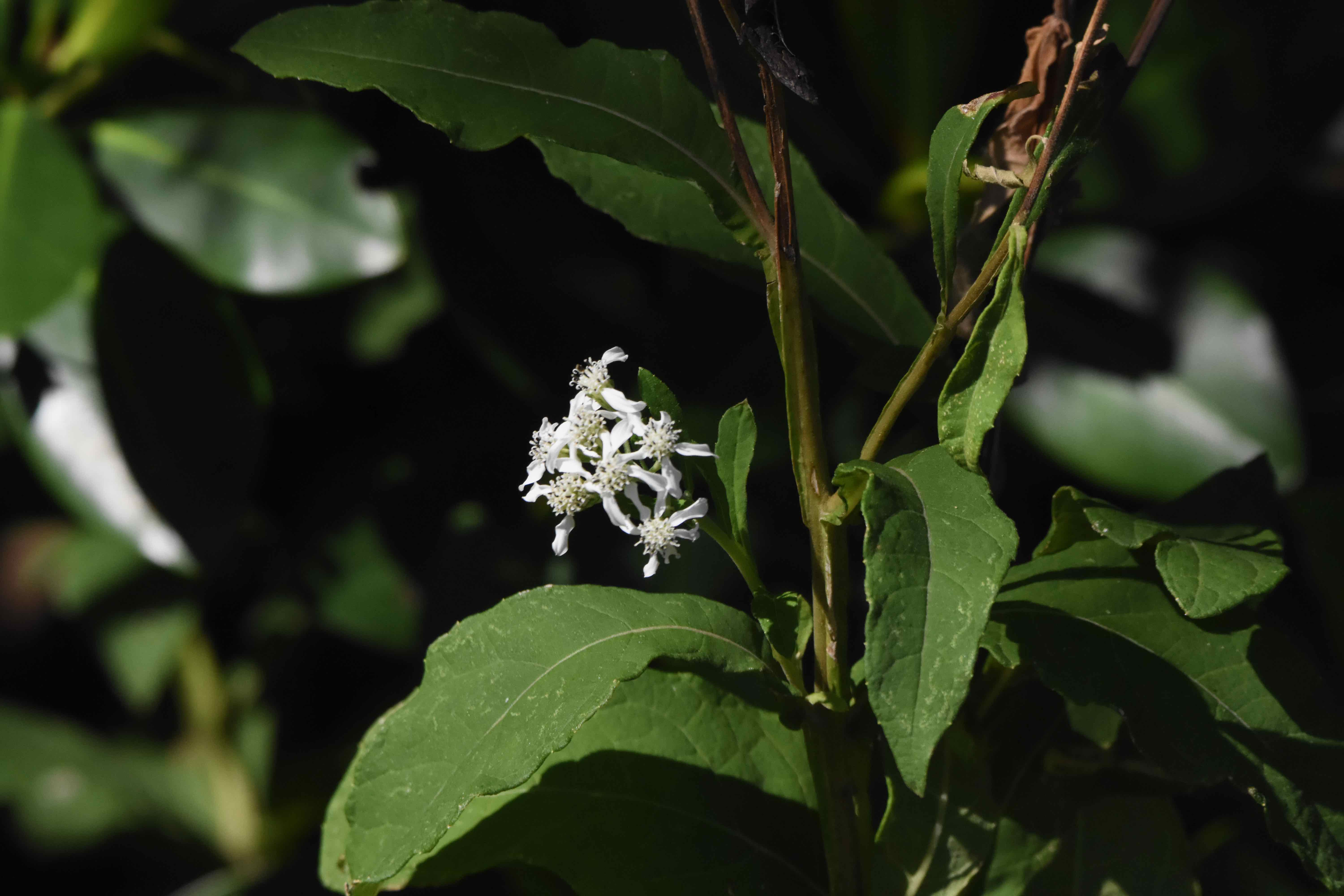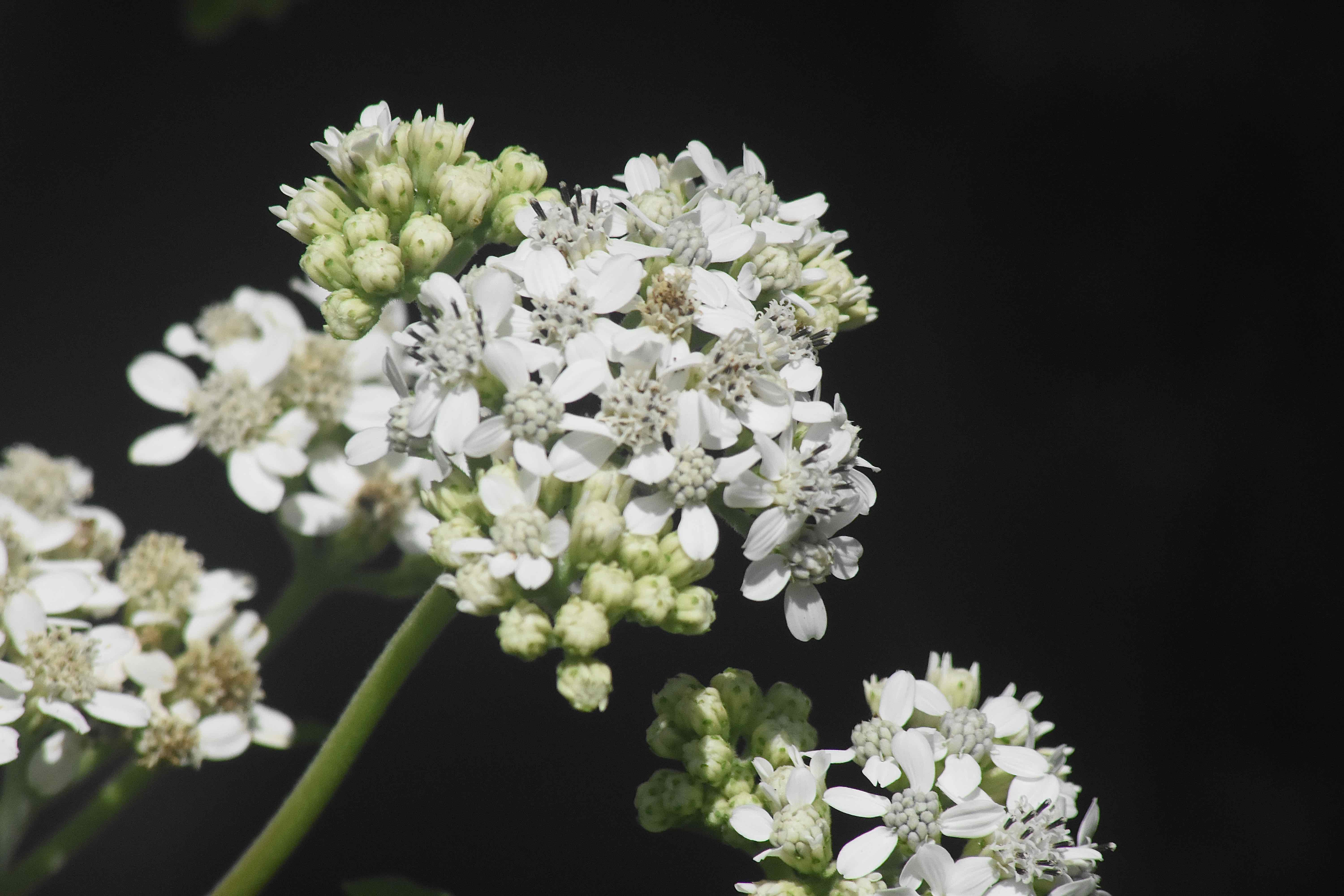
Frostweed, photographed at Blowing Rocks Preserve, Hobe Sound, Martin County, in September 2016.
Frostweed, Verbesina virginica, is quite lovely when it sends out profusions of white blooms come fall. Its foliage, with the fleshy flanges, or ribs, along the stalk, provide interest in other months.
But frostweed's coolest feature is one we're unlikely to ever see, because we're just too far south. A hint is in the name. When winter comes and temperatures fall below 32 degrees Farenheit, frostweed's stems exudes a watery liquid that freezes into various shapes. Some of the names that have been given these natural sculptures: frost ribbons, frost freaks, ice ribbons, ice flowers and ice fingers.
Frostweed is found throughout Florida; the one gap in our neck of the woods happens to be the Keys. It is a Florida native, also found growing as far north as Pennsylvania, west to Iowa and south to Texas.
It loves shady and partly shady places; it's commonly found growing along forest edges, but we've also seen it growing in deep woods where sunlight filters through. It has minimal need for water and will take to dry places.
Frostweed can be quite tall, reaching between three and six feet. The leaves are alternate along the stem, oval shaped, slightly toothed along the edges and come to a point at the end. The blooms are white, small but clustered in large numbers. It has rhizomes or underground stems, that allow it to spread and form dense colonies. It flowers August through October, but we've seen it blooming mostly beginning in late September into early October. It is a biennial or short-lived perennial, flowering the second year.
Frostweed is cultivated, its seeds available from a number of suppliers, but experts say it's best used in naturalized settings. It can also be grown by division. It is used in butterfly gardens; among the species attracted to frostweed's profusion of blooms: the monarch. No butterfly species uses it as a host, however. It's also an important nectar plant for bees.
Native Americans had multiple uses for frostweed. Probably the best known, as reflected in some of its other common names, was as a tobacco substitute.The Seminoles used the leaves to treat a disease they called bear sickness, marked by headaches, fever, thirst, constipation and blocked urination. They used it as a pain reliever, to treat rheumatism, stomach aches and eye problems. The root bark was used to purify the body after funerals, by "student" doctors and by doctors after the death of a patient. The Choctaw and the Chickasaw also had their uses for frostweed, including as a diuretic, as a pain reliever, as a stimulant, to break fevers and to treat venereal diseases.
Other names for Frostweed include white crownbeard, wingstem, white wingstem, iceplant, ice weed, Virginia crownbeard, Indian tobacco and squaweed. It Is a member of Asteraceae the sunflower family. One quick note before we go: there are several other plants that are commonly called frostweed, so when researching this plant, be sure to check for the scientific name, Verbesina virginica.
Click on photo for larger image
Links for Frostweed



